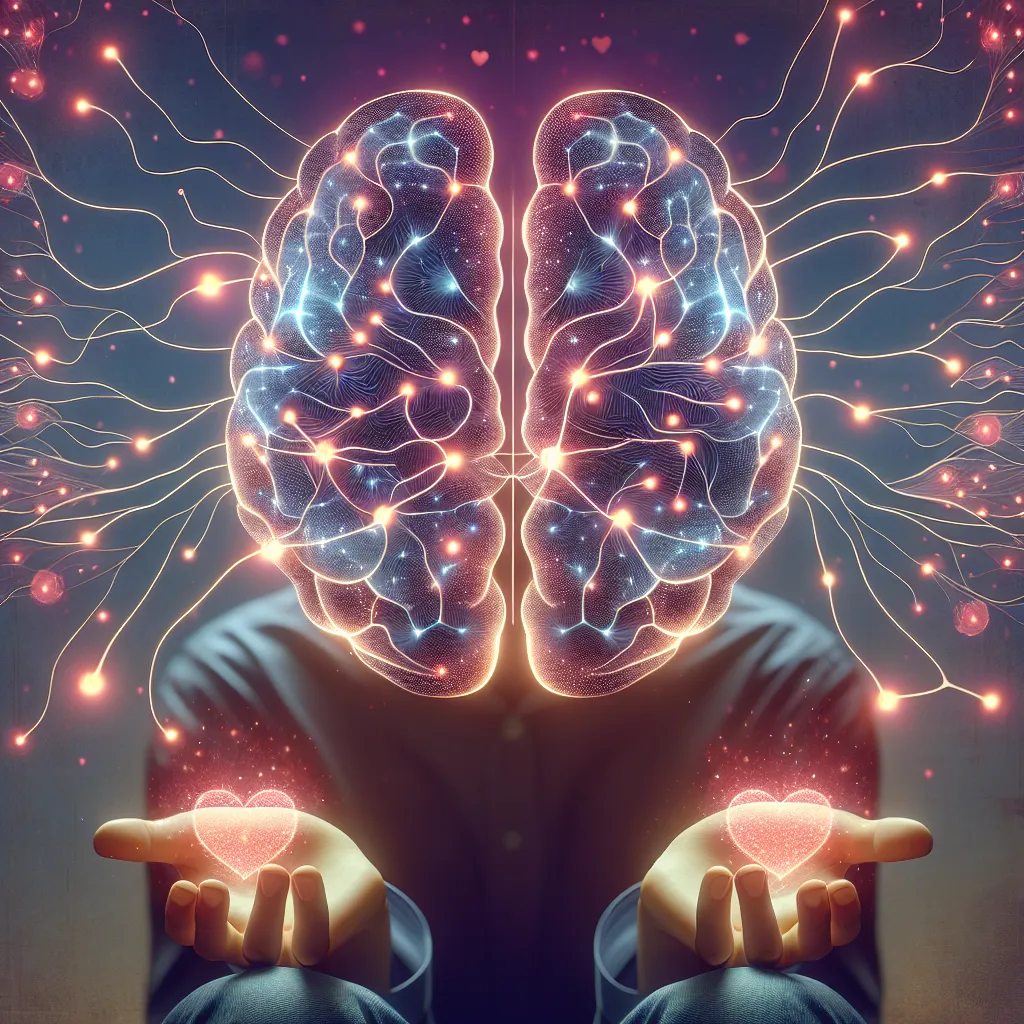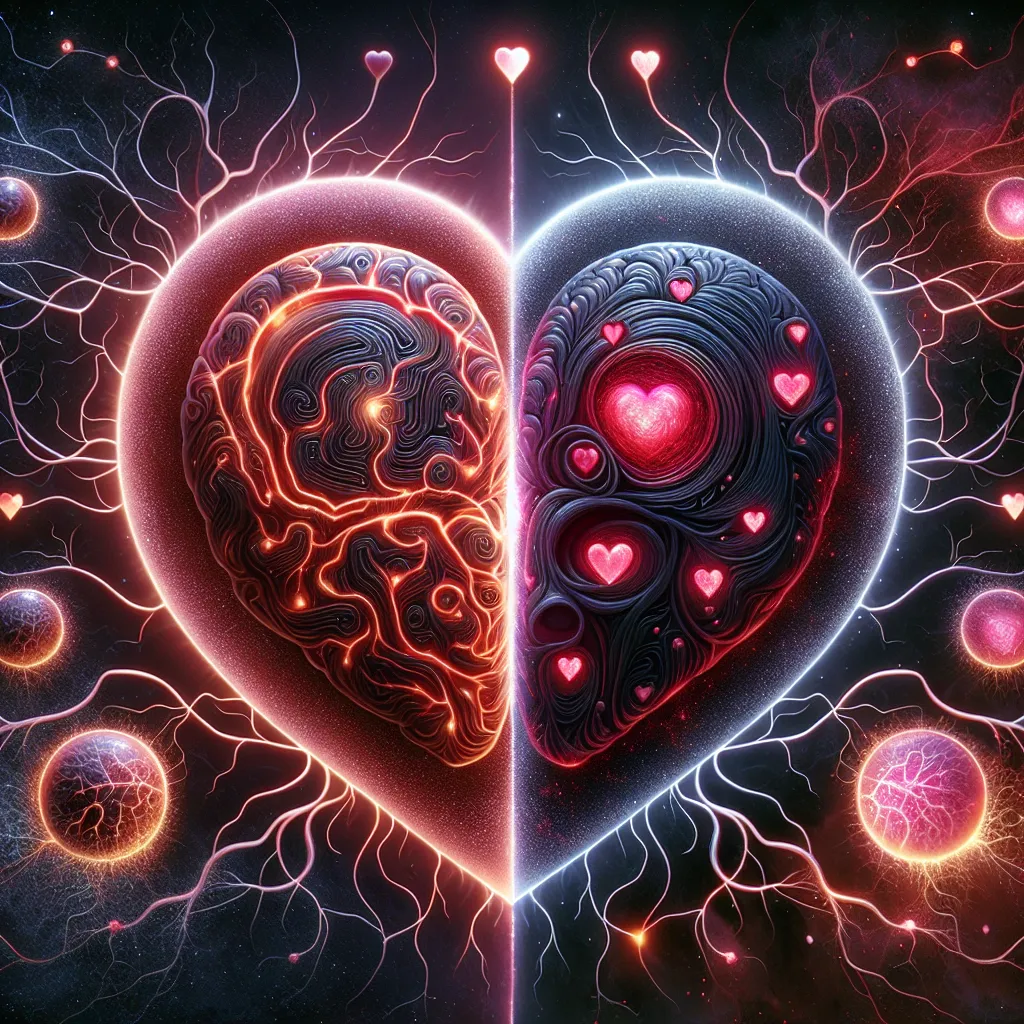Hello, relationship seekers!
Today, we’re diving deep into an important question about relationships: “Why does the brain create hallucinations of an ex’s presence after a breakup?”
The Direct Answer
The human brain is wired for connection and creates strong bonds with those we are close to. When a relationship ends, these bonds don’t just disappear. Instead, the brain might simulate the presence of an ex as a coping mechanism to deal with the sudden loss and loneliness. This phenomenon, known as “phantom ex syndrome,” is similar to how amputees might feel sensations from a limb that’s no longer there. Essentially, our brains are trying to make sense of a new reality and fill in the missing gaps.
Now, let’s explore the extensive evidence and details that support this answer:
1. The Neuroscience behind Breakups
Understanding the brain’s reaction to breakups is essential in comprehending why it creates hallucinations of an ex’s presence.
A. Love as a Drug
When we fall in love, our brains release chemicals like dopamine and oxytocin that create feelings of happiness and attachment.
– Expert Perspectives: Dr. Helen Fisher, a biological anthropologist, likens love to a drug, causing addiction-like behaviors. Dr. Lucy Brown, a neuroscientist, concurs, stating that love activates the same regions in the brain as cocaine addiction.
– Psychological Research: Studies show that these chemicals drop dramatically after a breakup, leading to withdrawal-like symptoms.
– Real-World Examples: People often report feeling a “void” or “emptiness” after a breakup, similar to drug withdrawal.
B. The Role of Attachment
Attachment theory plays an important role in understanding why we might hallucinate an ex’s presence.
– Historical Context: Attachment theory, developed by John Bowlby, suggests that we form strong emotional bonds with significant people in our lives.
– Common Challenges: When these attachments are severed, as in a breakup, we can experience severe distress and longing.
– Practical Applications: Understanding your attachment style can help you manage post-breakup hallucinations and foster healthier relationships in the future.
C. Neurological Changes Post-Breakup
Breakups cause significant changes in the brain, which can lead to hallucinations of an ex’s presence.
– Expert Perspectives: Neurologist Dr. Rhawn Joseph explains that the brain regions associated with memory and emotions become highly active after a breakup.
– Psychological Research: Studies show that these heightened activities can create vivid memories or hallucinations of an ex.
– Real-World Examples: Many people report seeing or hearing their ex in familiar places or situations after a breakup.
2. The Psychology of Loss and Grief
Loss and grief are common experiences after a breakup, which can exacerbate the hallucinations of an ex’s presence.
A. Stages of Grief
Psychologist Elisabeth Kübler-Ross’s model of the five stages of grief is applicable to breakups.
1. Denial: Initially, we may refuse to accept the reality of the breakup.
2. Anger: We might feel intense anger towards our ex or ourselves.
3. Bargaining: We may try to negotiate with ourselves or an ex to reconcile the relationship.
4. Depression: Feelings of hopelessness and sadness can set in.
5. Acceptance: Finally, we come to terms with the relationship’s end.
During these stages, our brains may create hallucinations of an ex’s presence as a form of denial or bargaining.
B. The Role of Memory
Our memories can play tricks on us, especially when dealing with loss.
– Expert Perspectives: According to Dr. Daniel Schacter, our memories are not perfect recordings of past events. They are susceptible to distortion and fabrication, especially under emotional distress.
– Psychological Research: Studies have shown that after a breakup, people are more likely to idealize their ex, leading to hallucinations of their presence.
– Real-World Examples: This can explain why you might feel your ex’s presence in familiar places or activities after a breakup.
C. Coping Mechanisms
Our brains use various coping mechanisms to deal with the pain of a breakup, including creating hallucinations of an ex’s presence.
– Expert Perspectives: Psychologist Dr. Susan David suggests that hallucinations can be a form of emotional avoidance, a way to escape the painful reality of a breakup.
– Psychological Research: Studies have shown that people who avoid dealing with their emotions tend to have more significant post-breakup distress.
– Real-World Examples: Consider the case of someone holding onto their ex’s belongings or regularly visiting places they used to go together. These behaviors can reinforce the brain’s hallucinations.
3. Pathways to Healing
Understanding why our brains create hallucinations of an ex’s presence after a breakup is the first step to healing.
A. The Power of Acceptance
Acceptance is a crucial part of the healing process post-breakup.
– Expert Perspectives: According to Dr. Robert Leahy, acceptance doesn’t mean liking the situation, but acknowledging it as it is.
– Psychological Research: Acceptance and Commitment Therapy (ACT) has shown to be effective in dealing with loss, including breakups.
– Real-World Examples: By accepting the reality of the breakup, we can start to reduce the brain’s need to fill in the gaps with hallucinations.
B. Resilience and Growth
Breakups, despite their pain, can lead to personal growth and resilience.
– Expert Perspectives: Psychologist Dr. Martin Seligman suggests that adversity, like a breakup, can lead to growth if we learn to view it as a challenge rather than a threat.
– Psychological Research: Studies have found that people can experience significant personal growth after a breakup, including increased self-understanding and confidence.
– Real-World Examples: Many people report emerging from a breakup stronger and more self-aware.
C. Seeking Professional Help
Professional help can be beneficial in managing post-breakup hallucinations and distress.
– Expert Perspectives: Therapists and counselors can provide tools and techniques to manage the distress of a breakup.
– Psychological Research: Cognitive-Behavioral Therapy (CBT) has been proven effective in helping individuals cope with breakups.
– Real-World Examples: Many people report improved post-breakup recovery through therapy.
Conclusion: The Definitive Answer
Based on all the evidence we’ve examined:
– Neuroscience: Our brains create hallucinations of an ex’s presence after a breakup due to changes in brain chemistry and attachment bonds.
– Psychology of Loss and Grief: These hallucinations can be exacerbated by the stages of grief and our memories playing tricks on us.
– Pathways to Healing: Acceptance, resilience, and seeking professional help can reduce these hallucinations and aid in healing.
Ultimately, the brain creates hallucinations of an ex’s presence after a breakup as a way to cope with the loss and fill in the gaps of a changed reality. Understanding this can help us navigate the challenging post-breakup landscape and find pathways to healing and personal growth.



